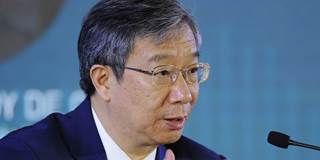Since Yi Gang became governor in March 2018, the People’s Bank of China has improved its communications, boosted its transparency, and moved toward a flexible exchange rate. Although the PBOC has plenty of room for further improvement, its progress so far is good news for China and international policymakers alike.
BEIJING – Fifteen years ago, Alan Blinder, a former vice chair of the US Federal Reserve System and a longtime professor of economics at Princeton, wrote a book entitled The Quiet Revolution about changes in central banking. Chief among these was a move by some central banks toward open communication and transparency, and away from their long-held tradition of secrecy and surprise. A central bank “goes modern,” to borrow from the subtitle of Blinder’s book, when it starts talking.

BEIJING – Fifteen years ago, Alan Blinder, a former vice chair of the US Federal Reserve System and a longtime professor of economics at Princeton, wrote a book entitled The Quiet Revolution about changes in central banking. Chief among these was a move by some central banks toward open communication and transparency, and away from their long-held tradition of secrecy and surprise. A central bank “goes modern,” to borrow from the subtitle of Blinder’s book, when it starts talking.